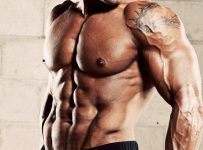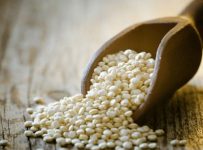
BY DONOVAN FORD Juggernaut
The following article originally appeared in Volume 3 of the Strong360 Magazine.
The classical lifts are important to becoming a master of the platform, but even the most elite lifters use supplemental accessory exercises to save their bodies. Nothing tears down your body like the full classical lifts. In a basic twelve-week training cycle, the weightlifting athletes at the Olympic training center have 108 workouts. Of those 108 workouts, 36 of those will be some variation of the snatch and clean and jerk. To break it down even further, 12 of those workouts are actually the classical lifts done from the floor. So anyone that believes that to be the best you need to only snatch and clean & jerk is foolish. The Bulgarian method of maxing out every day works for very few athletes, so keep that in mind. After seeing this breakdown, you are probably wondering, if only 12 of our workouts are snatch and clean from the floor, what do the other 96 workouts of our training cycle consist of. Coach Zygmunt is very big on adding supplemental exercises to help make improvements in the lifts. Here are a few things the resident team at the OTC does to improve their classical lifts.
BLOCK WORK
Not many gyms in America have blocks to lift from, but it is a growing trend in the US. If you don’t have some, get some.
At the Olympic training Center we spend 8-9 weeks of a training cycle lifting from blocks. Lifting heavy weights from the floor is tough on your body. Snatching or cleaning from the blocks cuts out the added stress of pulling weights from the floor. It’s also important in isolating areas of your pull where you might need a little extra work. For example: working on speed in the final pull or pulling the bar past your knees.
On a weekly basis we work in descending order. Monday is from the knee position, Wednesday from bellow the knee and Friday is from the floor. We also do a lot of combination lifts from the blocks. For example, instead of doing a double in the snatch or clean off the blocks you can you add in a snatch or clean pull before each lift. The pull before the lift allows you to focus on a correct movement pattern of the bar without going overhead or completing the entire lift. Zygmunt tells me if I pull the bar high and straight enough, the lift should be achieved.
JERK FOOTWORK
Another focus of our training is working on footwork for the jerk. Overhead strength can be gained by variety of overhead exercises, but footwork is just as important. The feet in the jerk need to be trained in weightlifting just like any other muscle.
Zygmunt has several different exercises to help train the feet, but a few of my favorites he calls “jump to split” and “press in split.”
Jump to spilt: you start with the barbell on your back as if you were doing a back squat, then you jump your feet into a jerk stance without going overhead. This is great movement for a few different reasons.
1) It helps train you to have quick feet getting to your split jerk position.
2) Another benefit of this exercise is that it helps improve your balance and stability with heavy weights in the jerk position. Because the weight is on your back and not overhead, you can work up to heavier loads than you can get over your head, and still get the benefit. Most importantly, you gain the benefit of the split jerk while saving your shoulders from too much stress.
A well-rounded exercise to help with overhead strength and balance is pressing in the split position. Start in your split jerk position, hold the barbell with a clean grip, and strict press the bar overhead. The benefits of this movement are similar to the jump to split, except you are adding a pressing element that helps with overhead strength and stability, and also helps with overall balance in the jerk.
SQUATS AND PRESSES
Our main focus in training, aside from the classical lifts, is squats. Ye,s everyone knows weightlifters front and back squat, but leg strength is one of the most essential factors in weightlifting. We do a lot of traditional front and back squats, but we also do many rack squats and split squats to help build our leg strength.
Coach Zygmunt is huge on rack squats because they help work on strengthening the sticking point in front or back squats. I call myself a strong squatter but even I have a sticking point in the squat.
Second is overhead strengthening. Getting weight over head is the final result, but your shoulder strength only improves but so much by doing the lifts. The resident lifters constantly do sotts press and single arm dumbbell pressing to improve overhead stability. My favorite exercise for working on my overhead strength in the snatch is snatch grip push press. The more my push pressing ability rose, my ability to snatch heavier weights did also.
Sotts press:
I am sure for most people I am preaching to the choir on this subject, but this is very important stuff. Zygmunt coaches several of the top weightlifters, and this is the kind of stuff we do. It’s not the only way to have success in the sport, but it is definitely something to think about in your training, especially if you feel you are getting beat up by doing the full lifts to often. I could write for days about all the things we do in our training at the Olympic Training Center but these are some of the most important in my training.
Source: http://jtsstrength.com/articles/2014…olympic-lifts/







